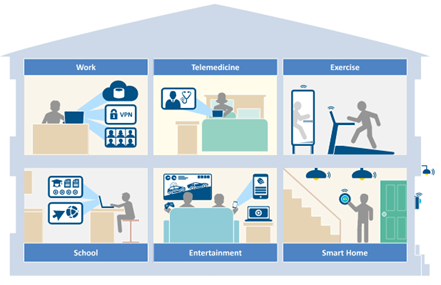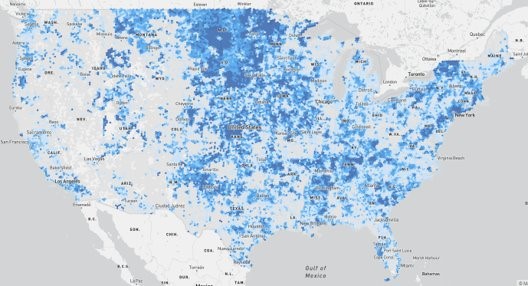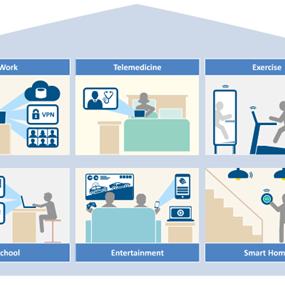By Anthony Barbetto, PE, Senior Transportation Operations Engineer, Gannett Fleming
Kevin Hunt, PE, PTOE, Vice President & Transportation Operations Manager, Gannett Fleming
Jason McCartney, PE, Project Manager, Gannett Fleming
The world is more connected than ever. As bandwidth needs increase, underbuilt networks and underserved communities risk falling further behind. The need for more robust communications in rural and disadvantaged communities has never been greater. Here, we list three things you need to know to bring broadband to your community.
1. Every community needs fiber optic broadband.
Fiber broadband networks have built the backbone of our economy for years, providing high-speed internet access to many urban and suburban areas. Fiber’s ability to transmit light across hair-like glass strands provides a resilient, durable way to access and transfer data quickly.
Fast, reliable broadband is essential for:
- Accessing the latest news and entertainment, telemedicine, e-commerce, and cloud-based applications.
- Telecommuting and remote work.
- Learning online through educational platforms.
- Empowering small businesses, promoting entrepreneurship, and expanding access to global markets.
The need for better access is significant. According to the National Association of Counties, in 2020, 65% of counties had average connection speeds lower than the FCC’s definition of broadband. It’s essential that broadband expansion keep pace so rural and underserved communities aren’t left behind.

The average US household today has more than 11 internet-connected devices, each requiring varying levels of bandwidth. Source: US Broadband Household Bandwidth Demand Study, Cartesian, July 2021.
2. Maintain optimal broadband performance.
Once broadband service has been expanded into an unserved or underserved community, the operating agency must shift its focus to maintaining its new broadband assets. This maintenance is needed to respond to damage from a variety of sources and to ensure that the network is kept in good working order.
This maintenance requires specialty skillsets, so agencies frequently need to identify partners to help them ensure their network performs as desired. Agencies often use operations and maintenance contracts to provide these specialty services. These contracts can also incorporate a commercialization element that generates revenue for the operating agency, helping offset costs, and can be a key factor in expanding broadband to local households.
3. Federal funding will enhance broadband access.
Thanks to existing and new government funding, like the Infrastructure Investment and Jobs Act (IIJA), more communities can secure high-speed broadband connections—even those in remote, rural areas.
The IIJA is ushering in a historic level of broadband infrastructure funding targeting unserved and underserved communities, as well as community anchor institutions, such as schools. The massive $65 billion allocation is a once-in-a-generation investment that will drastically improve the availability of fiber broadband and reduce the number of Americans who are unconnected.
The investment is shared across multiple funding mechanisms, the largest of which is allocated to the National Telecommunications and Information Administration (NTIA), receiving over $48 billion alone to administer six broadband programs. The remaining funds will be split primarily between the Federal Communications Commission (FCC), which will administer the Affordable Connectivity Program, and the United States Department of Agriculture (USDA), which will administer the ReConnect Loan and Grant Program.
The disparity between access in urban areas and rural areas is an exceptionally large gap we need to close. If we want to innovate and lead the world into the next century, we need to ensure that all Americans, regardless of income or where they live, have broadband internet access.

Approximately 14.5 million Americans lack access to fiber broadband internet, depicted in the gray color. This includes 22.3% in rural areas, 27.7% in tribal lands, and 1.5% in urban areas. Source: FCC Nationwide Fiber Optic Broadband Coverage Map.


